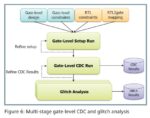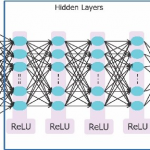Humans certainly have always had an aesthetic preference for symmetry. We also see symmetry showing up frequently in nature. The importance of symmetry in electronic designs has been apparent for decades. There are a host of analog structures that require balanced layout. For instance, these include differential pairs and … Read More
Tag: siemens
Siemens Offers Insights into Gate Level CDC Analysis
Glitches on clock domain crossing signals have always been a concern for chip designers. Now with increased requirements for reliability, renewed scrutiny is being given to find ways to identify these problems and fix them. In particular applications such as automotive electronics have given this added effort an impetus. Siemens… Read More
Developing Verification Flows for Silicon Photonics
Silicon photonics is getting a lot of interest because it can be used in many applications to improve bandwidth, reduce power and provide novel new functionality. It is especially interesting because it offers an ability to combine electronics and optical elements into the same die. Though it is fabricated with familiar silicon… Read More
Embedded Analytics Becoming Essential
SoC integration offers huge benefits through reduced chip count in finished systems, higher performance, improved reliability, etc. A single die can contain billions of transistors, with multiple processors and countless subsystems all working together. The result of this has been rapid growth of semiconductor content … Read More
Library Characterization: A Siemens Cloud Solution using AWS
Pressing demands on compute speeds, storage capacity and rapid access to data are not new to the semiconductor industry. A desire for access to on-demand computing resources have always been there. During pre-cloud-computing era, companies provisioned on-demand compute capacity by procuring high performance computing … Read More
The Five Pillars for Profitable Next Generation Electronic Systems
Although electronic systems design as a discipline has been around ever since electronics systems came into existence (and that was many decades ago), the design complexities involved and the demands and constraints placed on the systems have multiplied significantly since then. Recent research by LifeCycle Insights shows… Read More
Probing UPF Dynamic Objects
UPF was created to go beyond what HDL can do for managing on-chip power. HDLs are agnostic when it comes to dealing with supply & ground connections, power domains, level shifters, retention and other power management related elements of SoCs. UPF fills the breach allowing designers to specify in detail what parts of the design… Read More
Siemens is the True Catalyst for Secure and Trusted Digital Transformation
Introduction
For many years, I pondered the ultimate future of EDA. Companies such as Oracle, SAP and Dassault provide a huge array of enabling software infrastructure for the enterprise, including product design, mechanical design, project management and materials sourcing. But not for the all-important tasks of chip and… Read More
Chapter Ten – Design Automation for Systems
Electronic design automation has evolved to an extent that the complex chips with tens of billions of transistors frequently produce first pass functional prototypes from the manufacturer. What makes this so incredible is that such a small portion of the possible states of electronic operation are actually tested in the simulation… Read More
An Update from Joe Sawicki @ Mentor, a Siemens Business 56thDAC
Executives from the major EDA companies attend the Design Automation Conference to introduce new product features, describe new initiatives and collaborations, meet with customers, and participate in lively conference panel discussions. Daniel Nenni and I were fortunate to be able to meet with Joe Sawicki, Executive Vice… Read More










